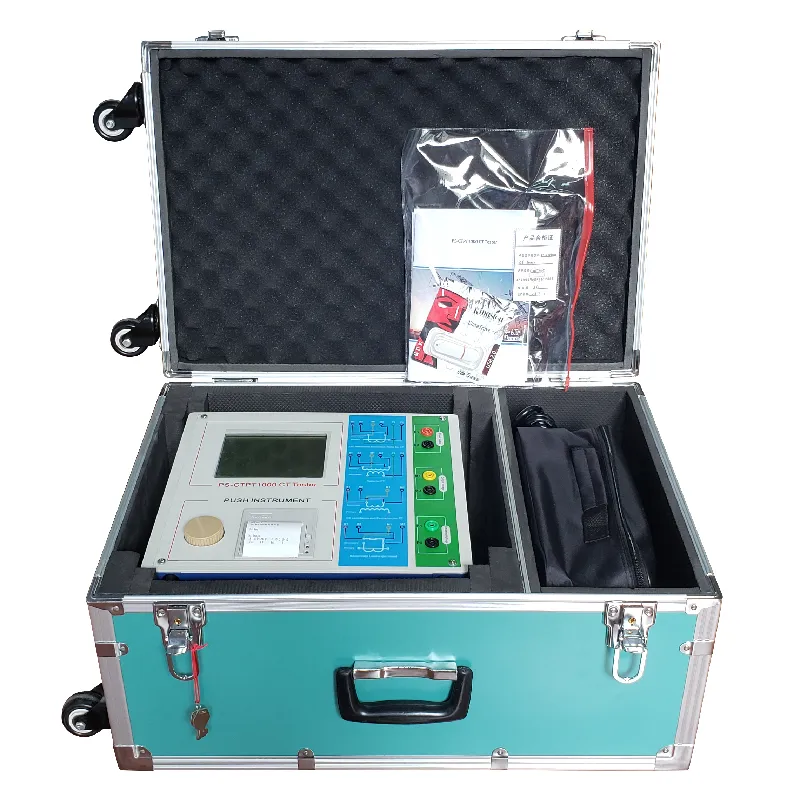 English
English


Understanding Hipot Voltage and Its Importance in Electrical Insulation Testing
Understanding Hipot Voltage Importance and Applications in Electrical Safety Testing
Hipot testing, short for high potential testing, is a critical procedure used in electrical safety testing to ensure that electrical devices can operate safely under high voltage conditions. The main purpose of hipot testing, particularly the hipot voltage applied during this process, is to verify the insulation strength of electrical components and assemblies. This article delves into the significance of hipot voltage, how it is measured, and its applications in various industries.
What is Hipot Voltage?
Hipot voltage refers to the high voltage applied to an electrical device during the hipot testing process. This testing procedure involves applying a voltage—generally much higher than the device's normal operating voltage—to assess the integrity of insulation materials. The premise behind this technique is straightforward if the insulation can withstand high voltages without failure, it should be capable of protecting against normal operating voltages as well.
Hipot testing can be categorized into two primary methods dielectric withstand testing and insulation resistance testing. Dielectric withstand testing involves applying a steady high voltage, while insulation resistance testing measures the resistance of the insulation material to the flow of leakage current. Both processes are essential for verifying the safety and reliability of various electrical products.
Importance of Hipot Voltage in Electrical Safety
The importance of hipot voltage testing cannot be overstated, especially in industries where electrical safety is paramount. For manufacturers of electrical devices, ensuring that products meet safety standards is crucial to protect consumers and maintain regulatory compliance. Hipot testing helps identify potential weaknesses in insulation that could lead to hazardous conditions, such as electric shocks or fires.
hipot voltage

Moreover, many international safety standards—such as IEC, UL, and CSA—mandate the use of hipot testing to certify electrical devices. Regular testing can also prevent catastrophic failures in products that could lead to costly recalls and damage to a company's reputation. Therefore, the application of hipot voltage during safety testing not only protects end-users but also serves as a critical risk management tool for manufacturers.
Applications Across Industries
Hipot testing finds applications in a vast array of industries, including consumer electronics, automotive, medical devices, and power generation. In the consumer electronics sector, devices such as chargers, computers, and tablets undergo rigorous hipot testing to ensure their safety and functionality. In the automotive industry, electric and hybrid vehicles must pass hipot tests to ensure the safety of their electrical systems.
In healthcare, medical devices like MRI machines, defibrillators, and surgical instruments require hypof tests to ensure that they are safe for patient use. The failure of any of these devices due to faulty insulation could have dire consequences, making hipot testing an essential part of the manufacturing process.
In the power generation industry, high voltage equipment such as transformers and circuit breakers must also undergo hipot testing to prevent failures that could result in widespread power outages or hazards. The significance of hipot testing, therefore, transcends individual industries, reinforcing the critical need for safety in electrical engineering.
Conclusion
Hipot voltage testing is a vital component of electrical product development and safety assurance. By applying high voltage to assess insulation integrity, manufacturers can significantly minimize the risks associated with electrical devices. As technology continues to evolve and the demand for safe electrical products increases, the importance of rigorous hipot testing will remain a cornerstone of electrical safety practices across all sectors. Embracing these testing procedures not only protects consumers but also fosters innovation and trust in electrical engineering.
-
Differences between open cup flash point tester and closed cup flash point testerNewsOct.31,2024
-
The Reliable Load Tap ChangerNewsOct.23,2024
-
The Essential Guide to Hipot TestersNewsOct.23,2024
-
The Digital Insulation TesterNewsOct.23,2024
-
The Best Earth Loop Impedance Tester for SaleNewsOct.23,2024
-
Tan Delta Tester--The Essential Tool for Electrical Insulation TestingNewsOct.23,2024





